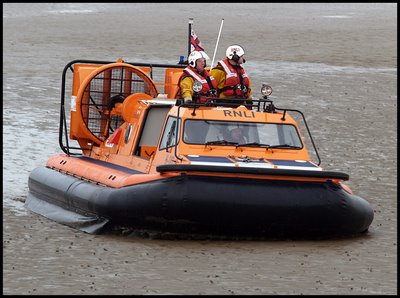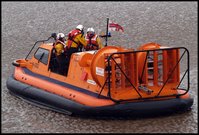

 click photo to enlarge
click photo to enlargeIt's remarkable that the main inshore and offshore rescue service of a rich country like the UK should be in the hands of a voluntary organisation with charitable status. But, the Royal National Lifeboat Institution (RNLI) began its life in 1824, a time when many services were in the hands of the private sector or charities, so perhaps the real surprise is that it has remained independent of government for all these years! It is undoubtedly the vital work and selfless committment of its organisers and lifeboat crews that are responsible for this, and for making the RNLI one of the most loved and best supported voluntary organisations in the UK.
In 2006, still funded largely by donations from the public, and costing about £330,000 per day, the RNLI maintains 332 lifeboats based at 233 lifeboat stations. An additional 6 hovercraft were introduced from 2002, located in areas where tidal mud flats make rescue by conventional craft difficult or impossible. Only two lifeboat stations (Spurn Point, Yorkshire and Waterloo Pier, London), have full-time crews: the others are manned almost exclusively by volunteers. In 2005, often alone, but sometimes in co-operation with HM Coastguard and military Air-Sea Rescue, RNLI craft launched 8,273 times and rescued 8,104 people.
My photographs show a visit by the Morecambe RNLI Station hovercraft, "The Hurley Flyer", to Fleetwood and Knott End. This small, 30 knot, twin diesel craft is manufactured by the UK company, Griffon Hovercraft, and is designated model 470TD. The vessel entered the River Wyre accompanying the Fleetwood lifeboat, then left the water to rendezvous with its transporter vehicle, before crossing the river and berthing at the Fleetwood RNLI station. The main photograph shows the hovercraft crossing the exposed sand at Knott End. The smaller photographs show the vehicle on the river and on the exposed mud. All the images were taken with a long zoom lens with the ISO at 200 to compensate for the heavily overcast day.
photograph & text (c) T. Boughen